Stunning pre-war architecture, natural hot springs, and good wine — this guide shares the top things to do and see in Wiesbaden, a lesser known gem in the heart of Germany’s wine region!
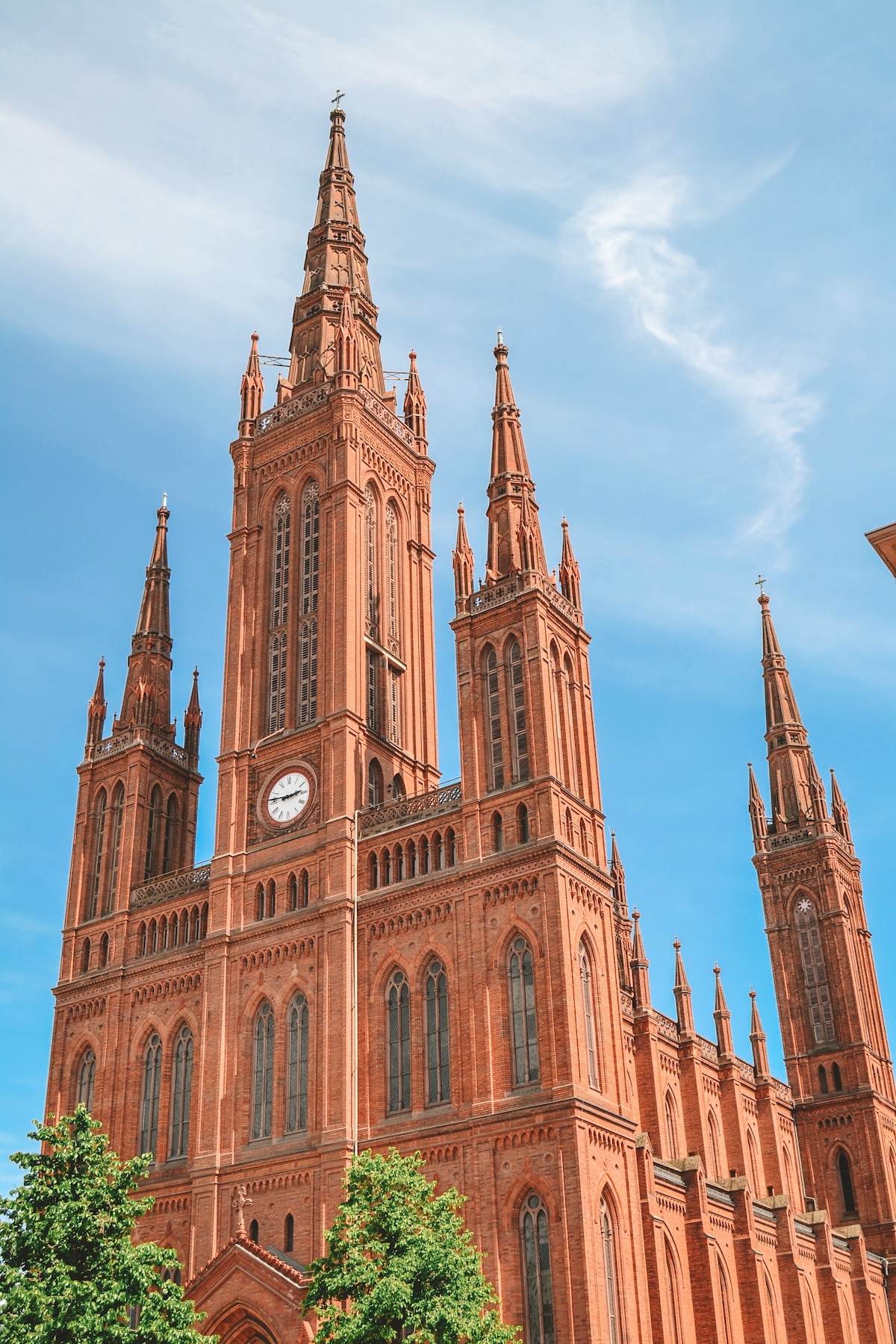
Here’s Why You *Need* to Visit Wiesbaden
The capital of Hesse, Wiesbaden was one of Germany’s most famous spa towns in the 19th century.
The 26 natural hot springs that drew wealthy patrons like Johann Wolfgang von Goethe and Fyodor Dostoyevsky back in Ye Olden Days still heat the city’s many thermal baths. (And the baths are much more affordable to visit now too!)
Wiesbaden is also known for its stunning pre-war architecture; unlike my home city of Berlin, it was barely touched in World War II. Walking through the city center is a feast for the eyes, and the many buildings designed in the “Historicism” architectural style make it feel like you’re roaming through a movie set.
As if all that isn’t enough, Wiesbaden is also in the heart of Germany’s wine growing region, called the Rheingau. The many wine bars in Wiesbaden provide an atmospheric backdrop for sampling the local Riesling and Burgundy wines.
Now that your interest has been piqued, let’s dive into what I think are the must-visit attractions in Wiesbaden!
Have fun exploring! ~Claire
Map of the Attractions
Explore the Old Town
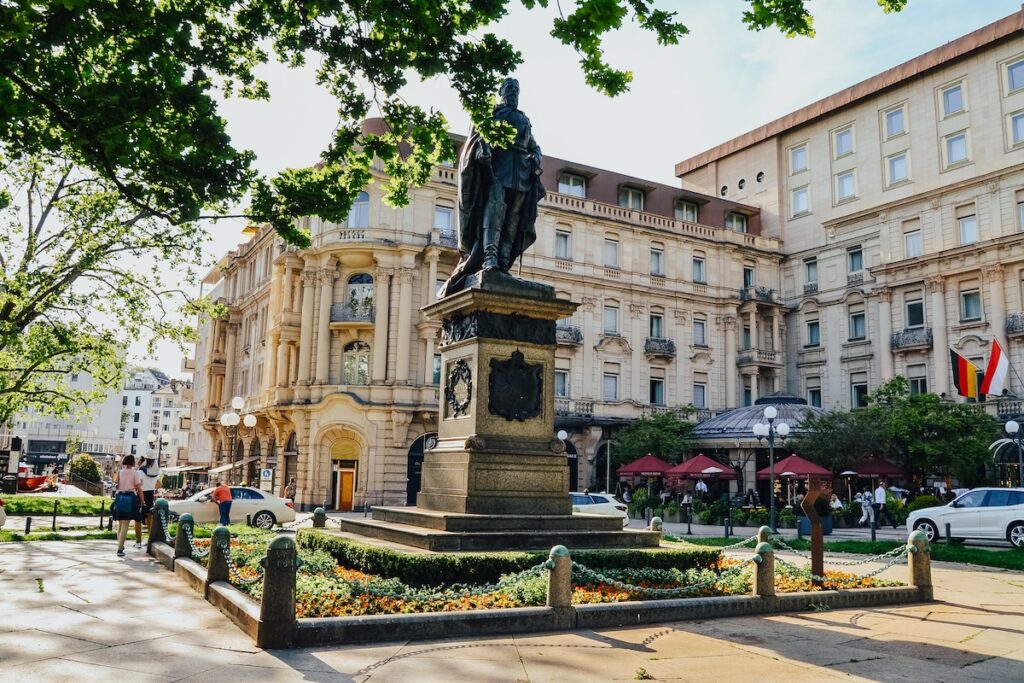
One of the areas you have to visit in Wiesbaden is the Old Town. It’s a compact pedestrian zone that’s filled with plenty of interesting sights and places of historic significance:
- Marktplatz and Schloßplatz — The two central squares have lots to admire! Look for the Former City Palace of the Dukes of Nassau (now home to the Hessian State Parliament), the Old and New City Halls, and the red brick Market Church (more info later in this post!).
- Kaiser-Friedrich-Platz — Look for the impressive monument to Kaiser Friedrich in the center of the square. Fun fact: his rule lasted just 99 days and ended with his death of throat cancer in June 1888.
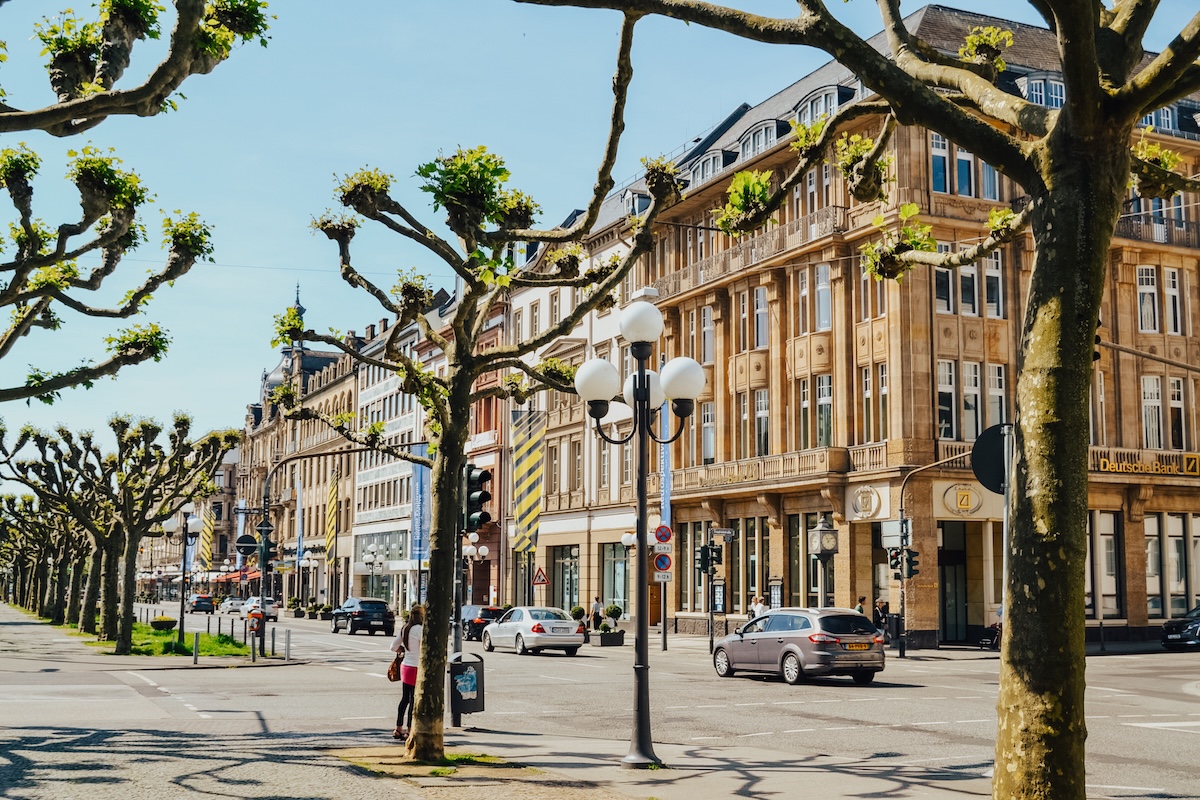
- Wilhelmstraße — Opened in 1810, it was built as an impressive boulevard that was four times as wide as the older streets in the city center. It’s a good place to glimpse “Old Wiesbaden.”
- Kochbrunnenplatz — Literally “hot spring square.” It’s a charming square with a fountain that’s fed from 15 underground hot springs. The annual Kranzplatzfest music festival takes place here (typically at the end of May and runs for five days). We stumbled across the festival last year and had a blast!
- Mauergasse — A popular street that’s known for having several wine stores and wine bars.
Shop Local at the Weekly Market
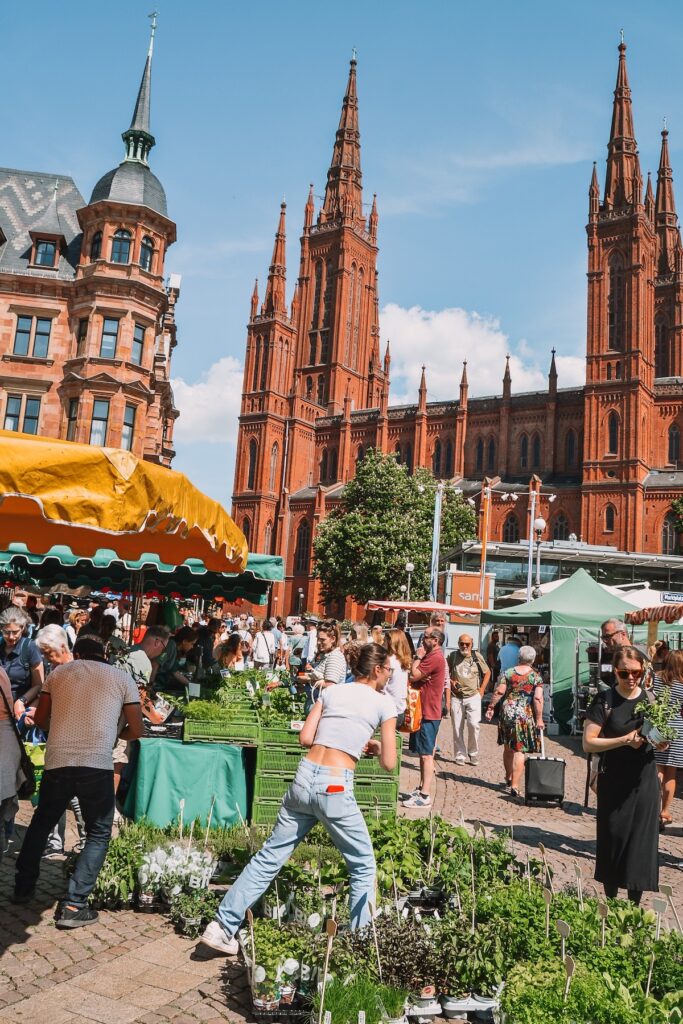
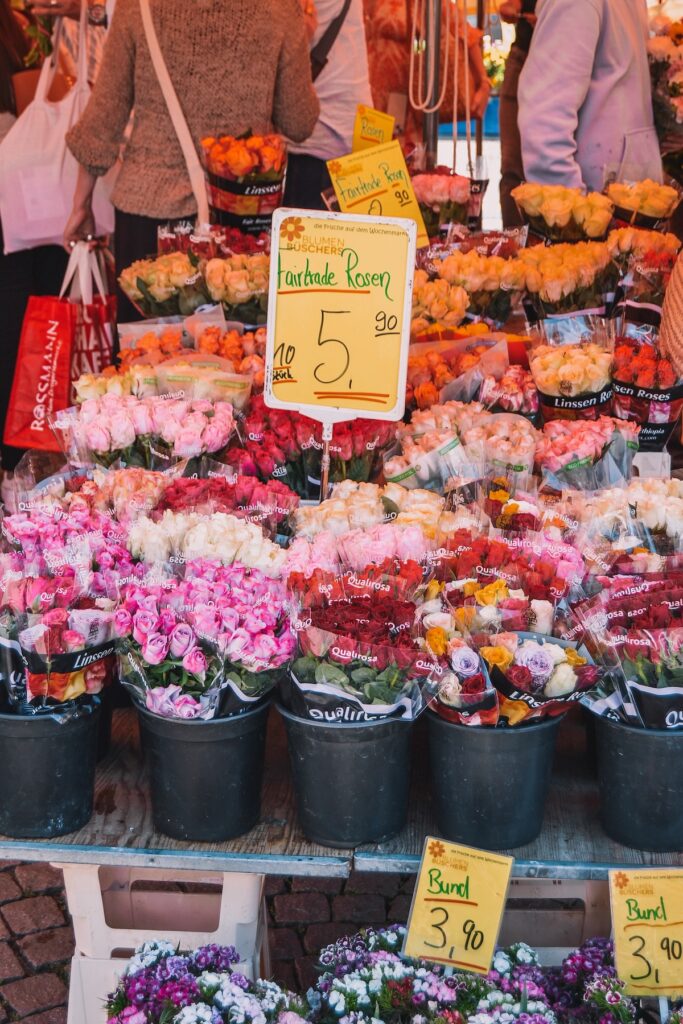
Having lived in Germany since 2019, I’ve grown accustomed to stocking my fridge with goods from the local weekly market. Wiesbaden’s weekly market blew any I’ve visited before out of the water.
The roughly 70 vendors sell everything from fresh produce to artisan bread and pastries to fresh and cured meats to cheeses to wine. Other goods for sale include flowers, locally made flavored vinegars and oils, and more.
My suggestion? Bring cash and a reusable shopping bag! Even if you’re in Wiesbaden just for one day, you can still stock up on yummy bits for a picnic breakfast or lunch.
Claire’s Tip: The weekly market is located behind the New Town Hall at the Dernsches Gelände. It operates Wednesday and Saturday between 7am to 2pm.
Admire the Neo-Gothic Market Church

One of my personal favorite attractions in Wiesbaden is the picturesque red brick Market Church. The Neo-Gothic elements reminded me of the many Gothic red brick buildings in Brandenburg an der Havel near Berlin and made me feel right at home.
The church was finished in 1862 and boasts a 98-meter-tall central tower (the tallest in the city!).
It’s still a functioning Protestant church, but it’s open to the public during the week and is free to enter. Just remember that it’s closed on Mondays!
Claire’s Tip: The Market Church is also used as a classical music venue throughout the year, so check its website to see if any of the upcoming performances interest you.
Indulge in “Kaffee und Kuchen” at Germany’s Oldest Viennese-Style Cafe

Coffee and cake? You don’t have to ask me twice!
Cafe Maldaner is a lavish Viennese-style cafe that’s been serving the best cakes in Wiesbaden since 1859.
The opulently decorated cafe opened its doors at the height of Wiesbaden’s popularity. The many wealthy visitors descending on the hot springs needed somewhere equal to their spectacularly sized wallets to dine in style.
Cafe Maldaner filled that gap with its sumptuously decorated interior and extensive list of coffees, teas, cakes, and pastries.
Definitely add this place to your Wiesbaden itinerary; it truly feels like you’re stepping back in time when you eat here!
Relax in One of Wiesbaden’s Gorgeous Parks
Wiesbaden has an array of parks, many of which are near the city’s top attractions. Here are my top picks for a leisurely afternoon stroll or picnic.
Kurpark
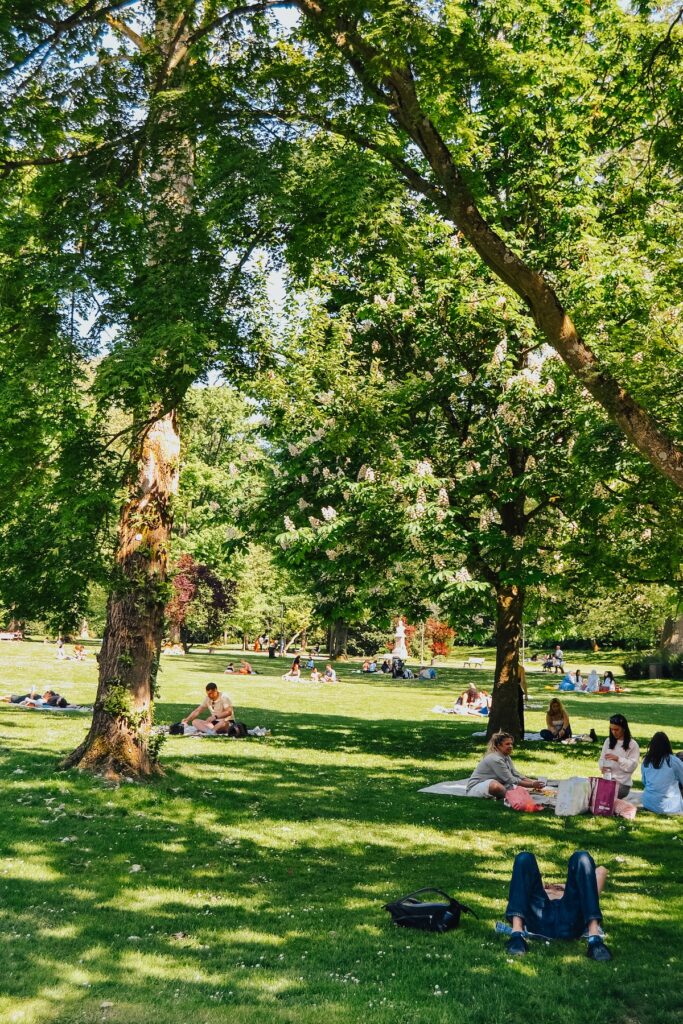
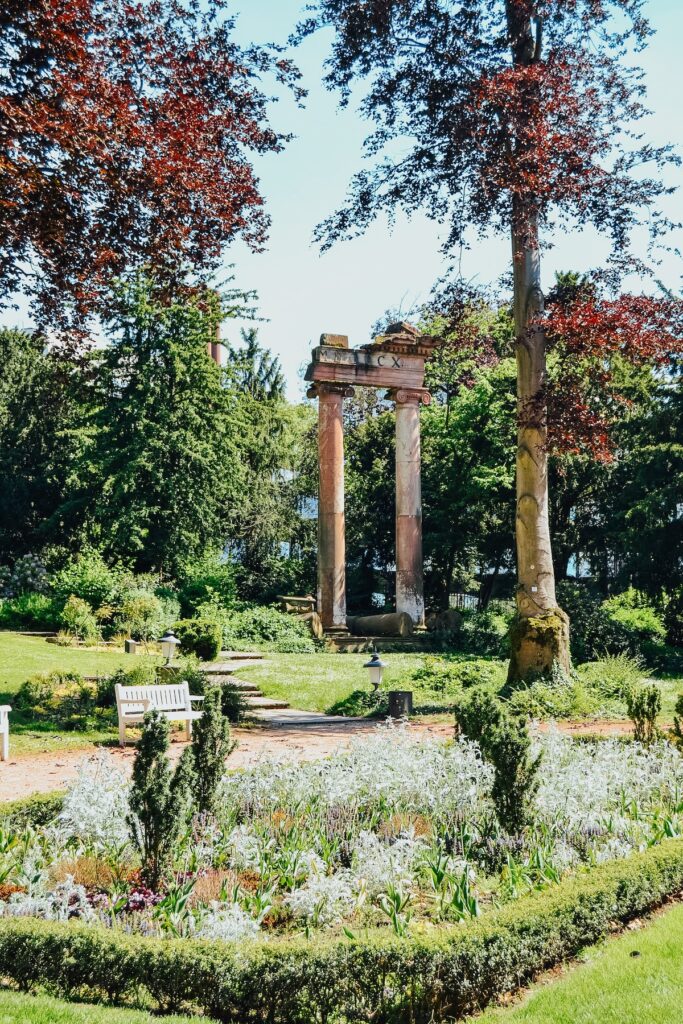
Located behind the former Kurhaus, or spa house (more on that later), the Kurpark is 5 kilometers of lush green space.
The park dates back to Wiesbaden’s heyday as a spa city. It was intended to give guests to the spa house a place to stroll and relax after bathing.
There’s a small pond in the middle of the park where you can rent paddle boats. Or, take a leaf from my book and bring a small picnic, a blanket, and a book to relax in the sunshine.
Claire’s Tip: When entering the park from the south side of the casino, look for the former ticket booth! Gambling was outlawed in Prussia in 1873 and the casino had to close down. The Kurpark was fenced in and visitors were charged a small entry fee in an effort to offset the costs of maintaining it.
Nerotal Park
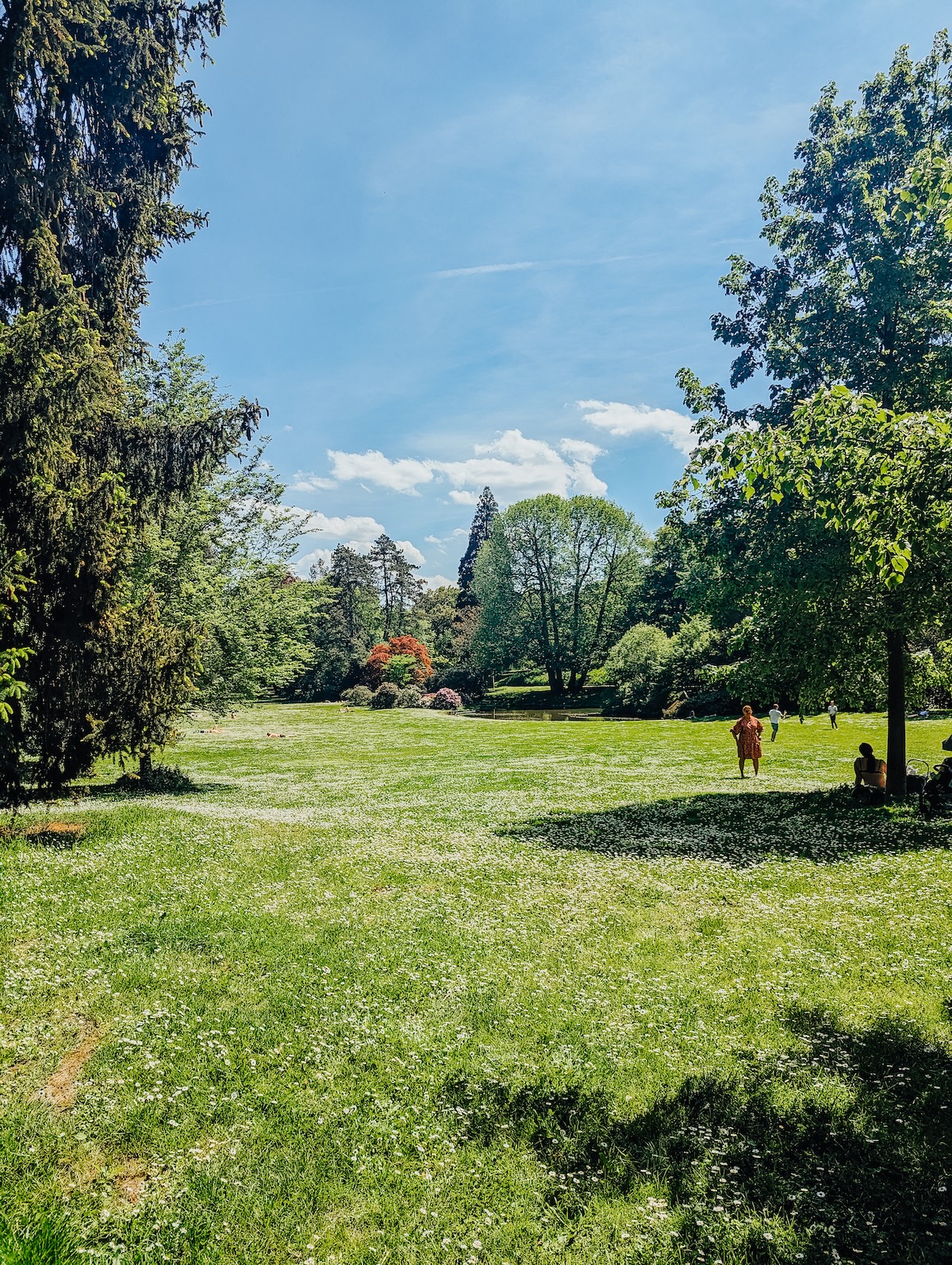
For a more “locals only” park, head to the beautiful Nerotal Park. The park is located in a meadow, which the Schwarzbach stream meanders through. (The whole vibe was very Anne of Green Gables to me.)
While at the park, look for the Bismarck Monument on the west side.
And, of course, you can’t miss the breathtaking mansions surrounding the park. This is one of the best places to see examples of the Historicism architecture that Wiesbaden is known for! You’ll see quite a few Wilhelminian homes, as well as some built in the Jugendstil style (aka art nouveau).
Warmer Damm

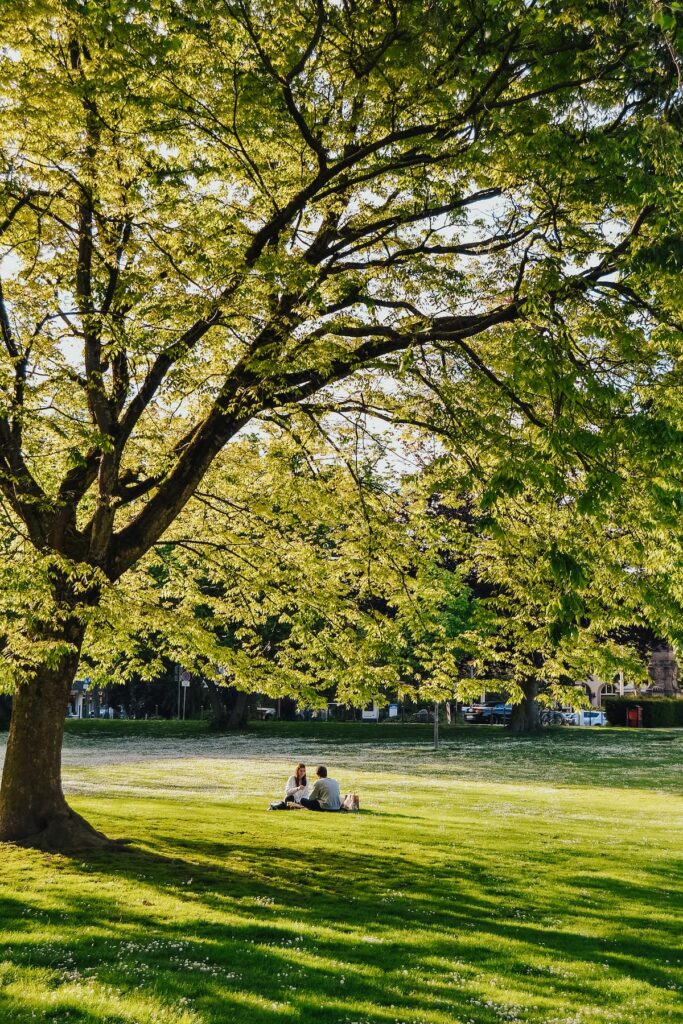
This pretty park in front of the Hessian State Theater was originally the site where the city’s various steams and hot springs co-mingled. (Warmer Damm translates literally to “warm dam,” so that checks out!)
These days, you’ll find a small pond surrounded by a small but lovely park area.
In the spring, the lawn is carpeted in daisies — it was one of my favorite sights in Wiesbaden the first time I visited!
Lose All Your Money at the Kurhaus Casino
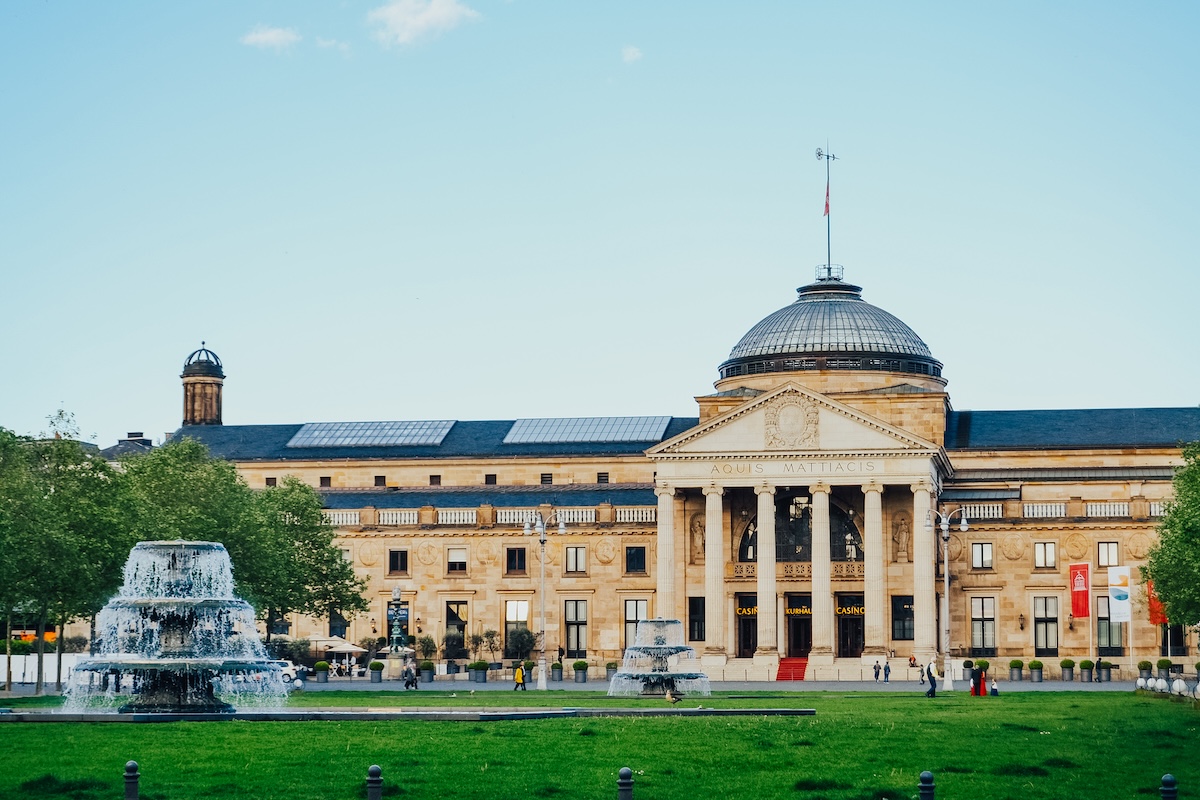
The former Kurhaus (spa house) is now a luxurious casino.
To be honest, I’ve only seen it from the outside because I’m not a gambling woman, but it’s a traditional casino with slot machines, roulette, blackjack, and poker.
In the winter, the Bowling Green out front is transformed into an ice rink. (That’s much more my speed!)
See a Performance at the Hessian State Theater
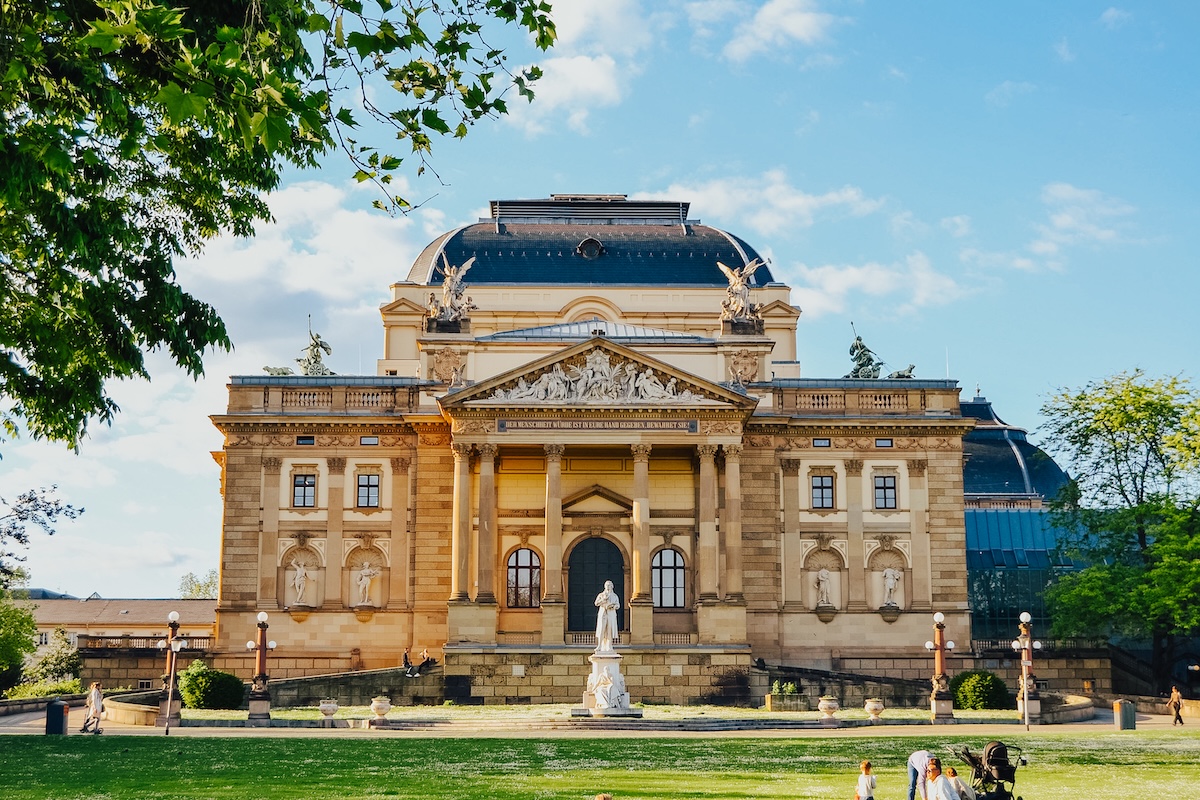
The imposing Wilhelminian-style Hessian State Theater puts on more than 50 productions per season, including ballets, operas, and plays.
Even if you don’t have the time or desire to attend a performance, it’s still worth dropping by the theater to admire the ornate exterior.
Check to see if your visit to Wiesbaden overlaps with one of the theater’s popular events:
- International May Festival (Maifest) — An annual theater festival that runs throughout the month of May.
- “New Plays From Europe” Festival — Takes place every two years and is the largest festival of contemporary European theater in the world.
Admire the View from Atop the Neroberg
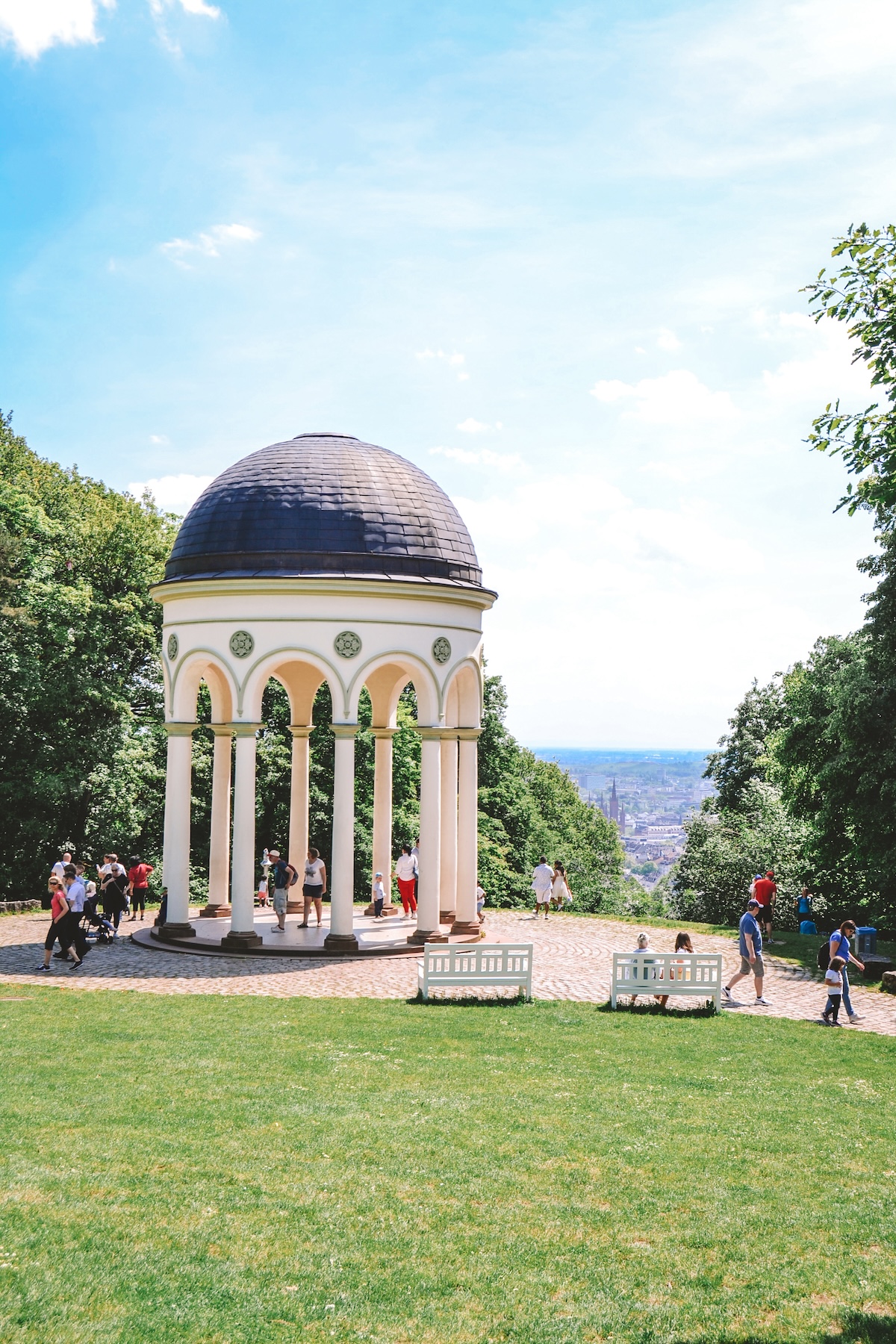
One of the more quirky and fun things to do in Wiesbaden is ascend the 245-meter-tall “mountain” on the northern edge of the city.
One one side of the Neroberg, you’ll find vineyards that have been in use since 1525.
On the other is the famous Neroberg Temple, which was erected in 1851 makes for a picturesque backdrop for the view of Wiesbaden from above. (Future boyfriends, take note! I’d like to be proposed to here.)
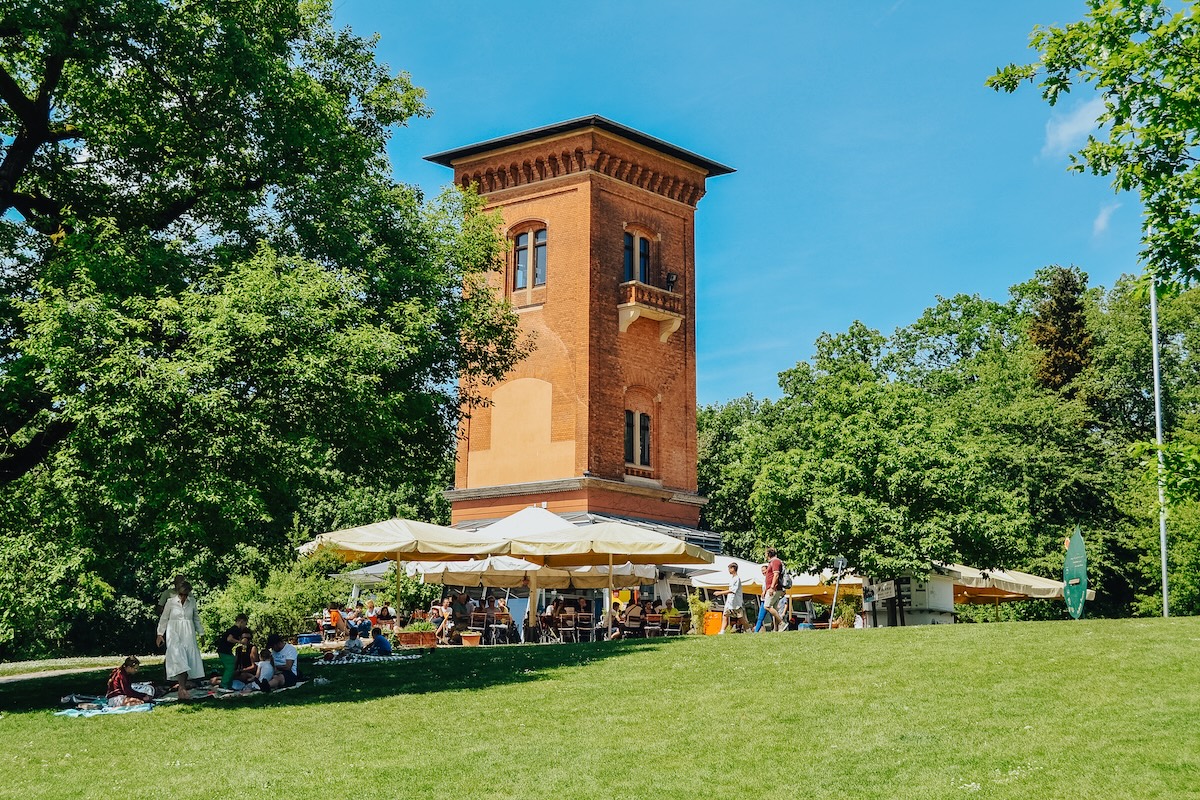
There’s also a small cafe and beer garden near the temple housed in what remains of the original Neroberg Hotel. The old hotel burned down in 1986, but the original tower is still standing.
Claire’s Tip: My friend who lives in Wiesbaden also recommends the Opelbad, a gorgeous swimming pool on the Neroberg with views of the city.
Claire’s Tip: Getting to the Top of the Neroberg
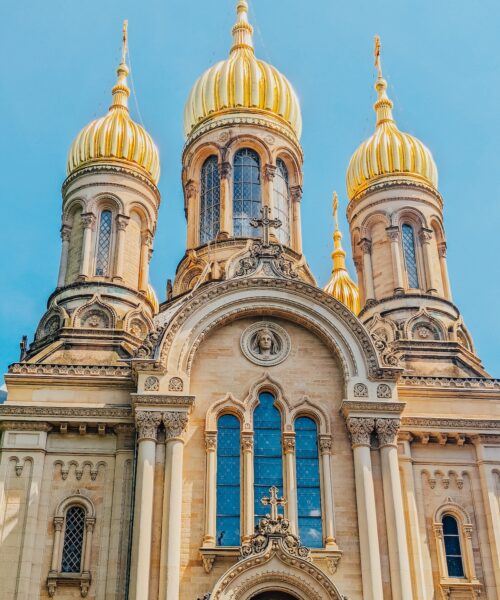
Option 1: Ride the Nerobergbahn (Mountain Railway). It’s Germany’s oldest water powered funicular and will get you up to the Neroberg Temple in under 4 minutes. A return ticket costs 5 Euros for adults and 3 Euros for kids, but the railway only runs through the spring and summer.
Option 2: Walk up the mountain the old fashioned way. It’s a beautiful, easy walk that’s completely uphill. There are two routes you can take:
- Make your way through the Nerotal Park, then follow the Philosopher’s Path (Philosophenweg) just until you come across an uphill, zig-zag path that takes you to the top of the Neroberg.
- Walk or drive up via Christian-Spielmann-Weg, which will take you past the gorgeous St. Elizabeth’s Church (an incredible Russian Orthodox church with gold onion domes). For reference, we walked up this way and down the path that led to the Philosopher’s Path.
Seasonal Activity: Visit Wiesbaden’s Christmas Market
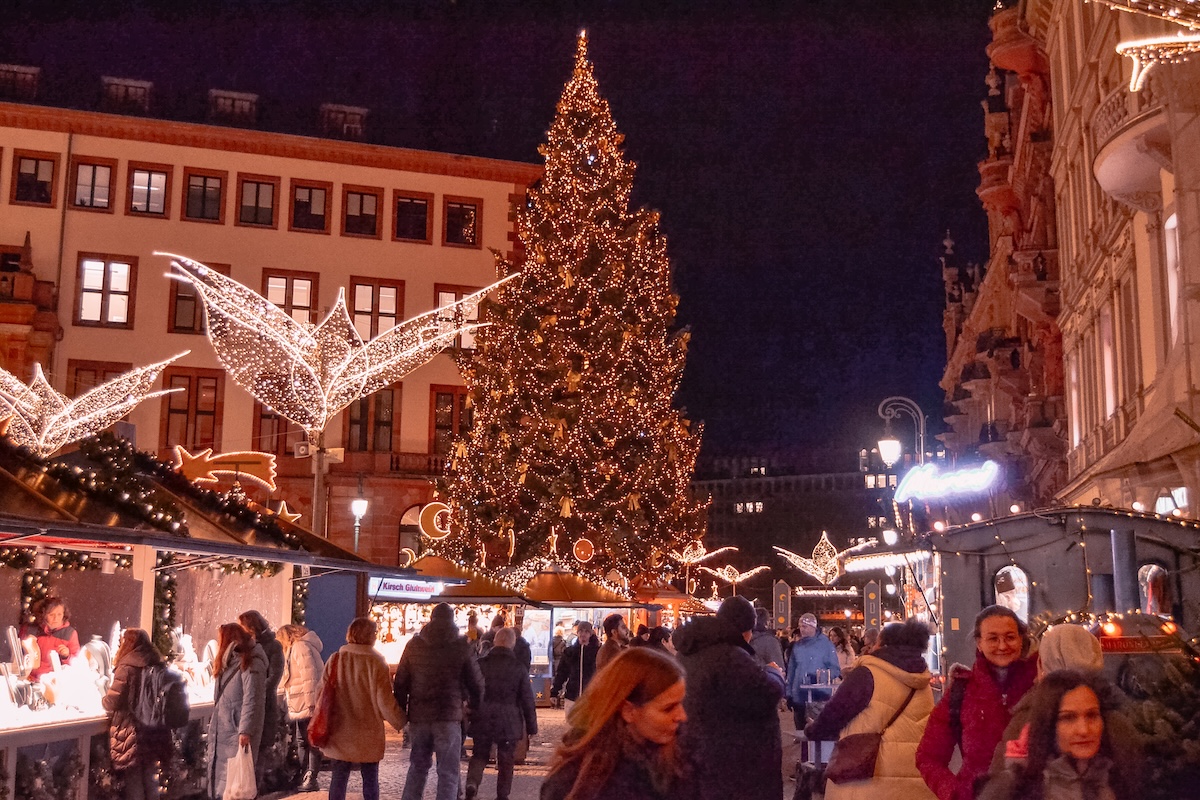
There’s truly no bad time to visit Wiesbaden, but December is undoubtedly when the city shines the brightest.
One of the can’t-miss things to see in Wiesbaden is its Christmas market. The “Twinkling Star Market” runs each year from the end of November through December.
It has around 100 stalls, the majority of which feel truly regional (meaning there are few “Made in China” products). I even saw several artisans onsite making their wares!
As the name suggests, twinkle lights are hung all over the market, casting it in a magical glow. Definitely visit Wiesbaden at Christmastime if at all possible!
Explore More of the Rhine Region on a Day Trip

Wiesbaden’s prime location along the Rhine River make it the perfect base for exploring Germany’s wine producing region.
There are so many great day trip destinations near Wiesbaden, but the easiest to reach are:
- Koblenz — 1 hour 30 minutes via train. See the famous “German Corner” where the Rhine and Moselle Rivers meet, and ride the cable car up to Ehrenbreitstein Fortress.
- Rüdesheim — 30 minutes via train. A half-timbered haven known for the narrow Drosselgasse alley, which is lined with shops and restaurants. You should also walk or ride the cable car up to the Niederwald Monument which offers an unparalleled view of the Rhine River from above.
- Mainz — 15 minutes via train. Birthplace of Johannes Gutenberg and home to two of his original Bibles. The Old Town is small but beautiful, and an evening wine tasting is the perfect way to end a day in Mainz!
Wiesbaden Attractions That Are on My Bucket List
Alas, I’ve not been able to see everything I’ve wanted to in Wiesbaden despite having visited a couple of times. Luckily, I’m already planning another visit in 2025!
Here are other fun things to do that come highly recommended:
- Thermal baths — Wiesbaden has 26 hot springs, with some of the hottest water in Europe. My friend and I have been wanting to visit the Kaiser-Friedrich-Therme which is a textile-free facility, but my visits haven’t yet coincided with the women’s only bathing days.
- Museum Wiesbaden — The city’s art museum has a collection with pieces ranging from prehistoric to contemporary.
- Caligari FilmBühne — One of the oldest silent movie theaters in Germany.
- Biebrich Palace — A Baroque palace that’s supposed to have a gorgeous park, right on the banks of the Rhine River!
Frequently Asked Questions
One full day is enough time to see the main attractions in the city center, but two days would be great if the weather is nice and you’re willing to take things slower.
Then, you could go up the Neroberg (in summer) or spend time at the Christmas market or another seasonal event.
If you’re able to time your visit so it coincides with one of the special festivals or events, definitely do that!
Wiesbaden is absolutely beautiful, but it is small; having a festival or special event to attend during your visit will make your trip even more fun.
May: The International May Festival (Maifestspiele) takes place each May and is hosted by the Hessian State Theater. The festival runs all month and includes performances ranging from operas to ballets to plays and more.
August: Wiesbaden is located in the heart of Germany’s wine region, so it’s only fitting that the annual Rheingau Wine Festival takes place here.
December: The Christmas market at the Marktplatz is one of the best I’ve ever been to, and it’s well worth planning a visit to Wiesbaden specifically for this market!
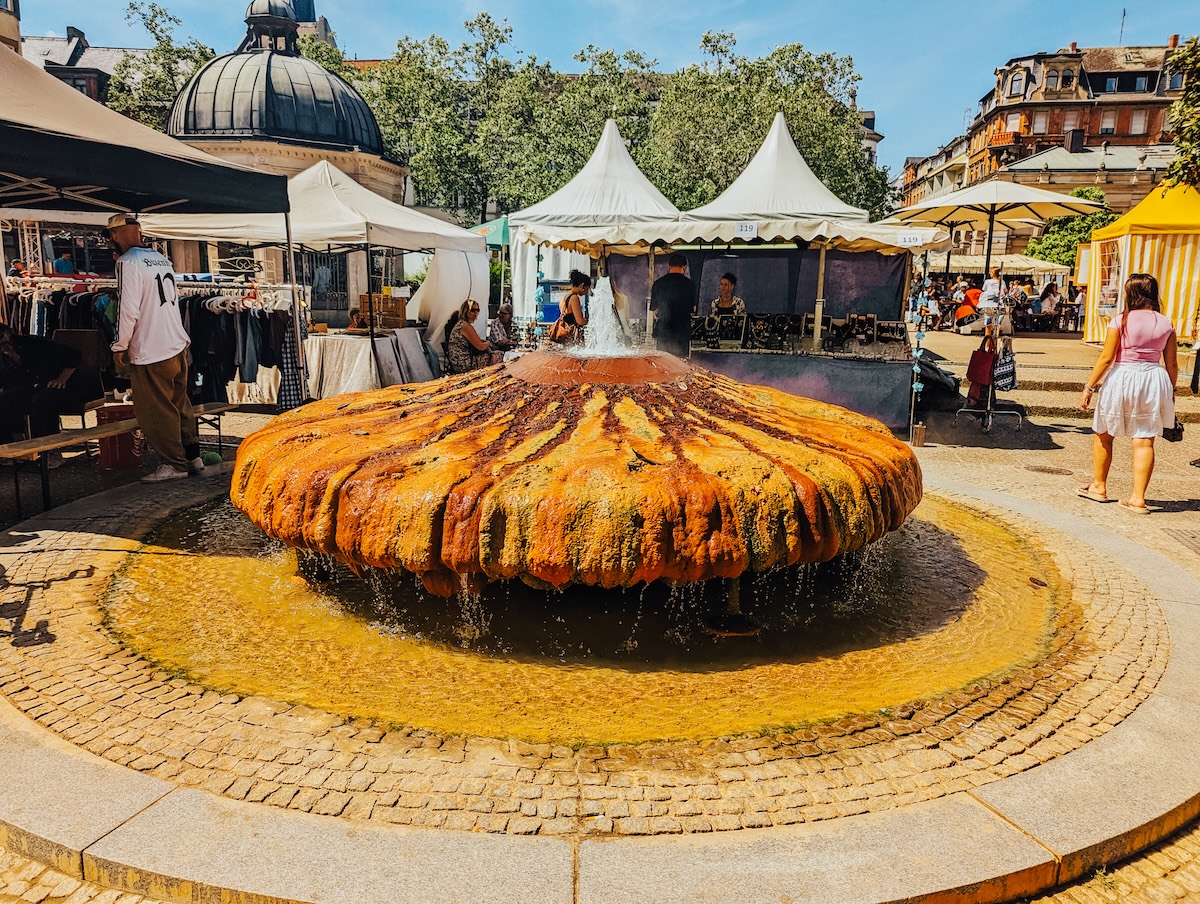
Is Wiesbaden Worth Visiting? Final Thoughts
I’d never heard of Wiesbaden until last year, when my dear friend moved here from Berlin for work.
I truly thought she was moving to the middle of nowhere, so imagine my surprise during my first visit when I realized just how much this small city along the Rhine has to offer.
Wiesbaden is a hidden gem in western Germany that even few Germans seem to think to visit! If you find yourself traveling through the Rheingau region, definitely stop in Wiesbaden to admire the 19th century architecture, try the local wines, and take in the sights.
Don’t forget to follow me on Instagram to keep up with my daily adventures in Berlin and beyond!

More Places to Visit in Western Germany:
- Things to Do in Bonn: The Former Capital of West Germany
- Düsseldorf Day Trip Guide: What to Do and See in 1 Day
- The Must-Visit Attractions in Frankfurt am Main’s Old Town
- What to Do and See in Cologne (Or follow this Cologne Day Trip Itinerary if you’re short on time)
- All of my Germany travel guides!
Leave A Reply!